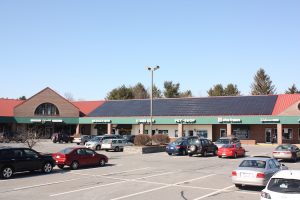 A key part of figuring out if solar is right for your business is deciding how you want to pay for it. In fact, it is often the hardest question to answer. That’s because there are a lot of options for financing commercial solar and some are complex and thus confusing. But we aim to make it easy- and get you the best deal possible.
A key part of figuring out if solar is right for your business is deciding how you want to pay for it. In fact, it is often the hardest question to answer. That’s because there are a lot of options for financing commercial solar and some are complex and thus confusing. But we aim to make it easy- and get you the best deal possible.
Bank Loans and Out of Pocket for Commercial Solar
The quickest way to get a commercial solar system is to pay cash out-of-pocket right upfront. You avoid any interest payments, get the full value of the Investment Tax Credit (ITC) (which is 26% if you start your project by December 31, 2020), and you can even use accelerated depreciation (MACRS) on it to get additional tax savings. In fact, the total amount you can depreciate is more than what you’ll pay after subtracting the ITC. For example, if the ITC is 26% you’ll pay 74% of the system price, but you’ll get to depreciate half of the ITC amount as well, so in this case, it’s 88% of the total cost! In short, it means you’re close to paying only half the price of the system after you factor in taxes (and of course, depending on your tax bracket).
But Out-of-Pocket means a significant up-front cost to you so it can be unrealistic for many businesses, so another option is to get a regular bank loan. If you choose to go that route, you own the system and benefit from all the tax incentives, green income, and electricity savings. This is the best choice particularly when you are not installing a relatively big system. You can choose your bank and negotiate the loan terms. In most cases, your regular bank is likely the best choice, but we can recommend possible institutions if you don’t have a “go-to” favorite. Does the loan officer have questions? Have them talk to us. Does your accountant have questions? If so, we can help there too!
Leasing
Obviously not everyone has enough debt capacity to pay for their system right away or take out a traditional loan. In that case, leasing might make more sense. There are two basic leasing options available.
The first is a capital lease. A capital lease is very much like a loan, but it has a different set of terms and conditions to it; the biggest being that the solar array is the major piece of collateral. Otherwise, it’s a lot like a traditional loan where you keep all of the tax credits, depreciation benefits, and green energy. And typically, at the end of the capital lease, you buy the system for $1.
The second is an operating lease. An operating lease is a great option if, for example, your business can’t make use of the Investment Tax Credit or the depreciation tax deduction. With an operating lease, you don’t own the system for the first seven years and instead, the leasing company does. And as a result the leasing company actually owns both the Investment Tax Credit (ITC) as well as the depreciation benefit. But in return, you get lower overall payments and get to keep the transaction off of your balance sheet. It is also just plain simpler. Better yet, once the lease term (and your final buyout) is completed you will own the system as if it were new to you and will get a depreciation tax benefit you can use at that time.
Power Purchase Agreement
If a seven-year lease sounds too short and a loan doesn’t work either, there is the Power Purchase Agreement (PPA) option. A PPA avoids payments altogether. Instead of payments a “third party owner” owns the system and you pay for the power the system generates. Or perhaps put more simply, your business agrees to allow the solar panels on your property while purchasing electricity from them at a discounted price compared to your utility. In this case, the third party receives the federal tax credits and deduction while you get a lower overall electricity rate.
And in some cases, the PPA can ultimately be converted to ownership, but instead of looking at a seven-year period, you may be able to get a PPA with OPTIONAL buyouts at 5, 10, 15, or in some cases even 20 years. You save less, but you have a much smaller financial commitment and again it is simple.
That’s a lot of information for a single blog – and as you might guess there is more to know about all of those options for commercial solar. But at least it is a start and perhaps more importantly remember that New England Clean Energy is here to help.




